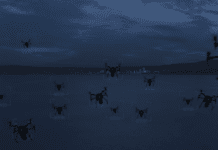
This post is also available in:
 עברית (Hebrew)
עברית (Hebrew)
Devices connected to the internet of things (IoT), now becoming standard components in new buildings, can increase energy performance while reducing costs. But such highly connected sensors can also bring potential security vulnerabilities.
Although technical solutions exist to counter security issues, implementation of these solutions are often impeded by the challenges that an organization’s Information Technology (IT) staff and a building’s Operations and Maintenance (O&M) staff have when they work closely together and share their knowledge about computer security and how buildings operate. These difficulties arise from different ways of working and different points of view about how technology works.
These challenges, in combination with a policy environment that rarely regulates IoT devices, increases risk, leaving buildings vulnerable to attack.
Several University of Washington schools and offices will soon team up to research how organizational practices can affect the interagency collaboration needed to keep IoT and institutional systems safe and secure.
The aim is to better understand how elements of organization, practice and policy interact and affect collaboration in keeping the internet of things safe and secure — and to provide clear examples of how such elements might help or hinder the necessary collaboration to implement smart building technologies.
The work funded by the National Science Foundation (NSF) will study how organizational policies and procedures can help — or hinder — the needed collaboration between information technology and operations and maintenance professionals.
The team will work on these issues through ethnographic research of university cybersecurity efforts, interviews with information technology and operations and maintenance professionals and case studies of cybersecurity efforts in the built environments of higher education, according to washington.edu.
























